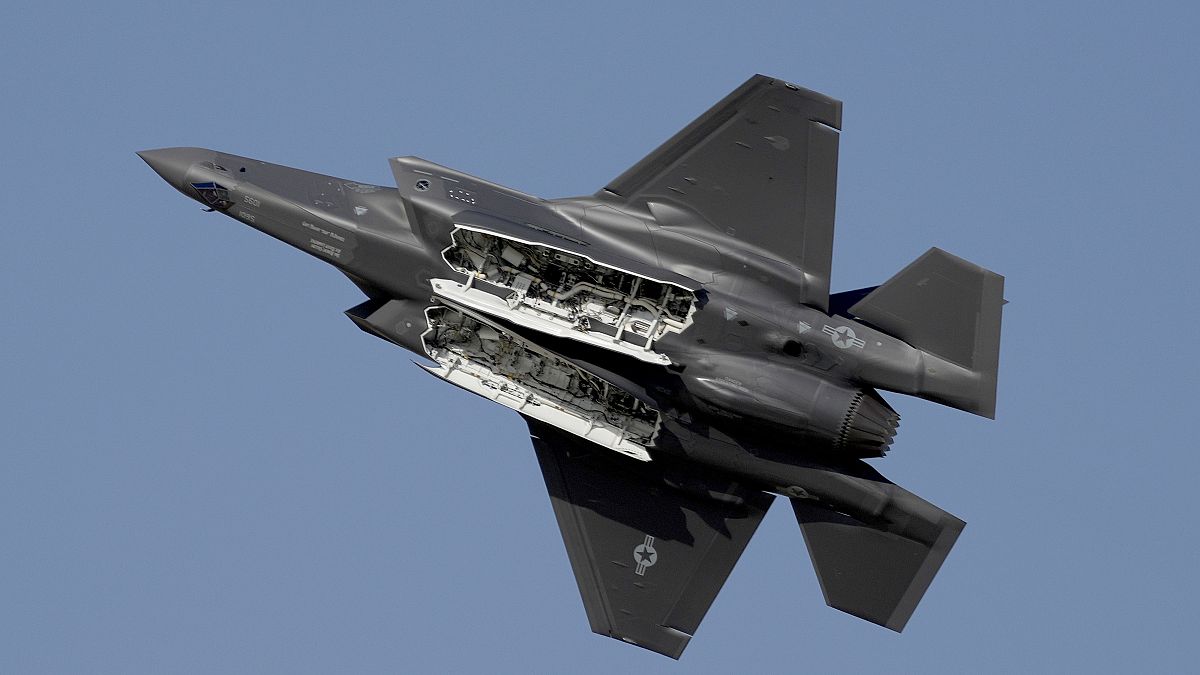EU needs weapons ‘quickly’ if US shifts military strategy, experts say

Experts in military technology say that whoever wins the White House will likely shift US military equipment to other areas than Europe. We look at what will the EU have to do to make up any shortfall in its defence tech.
As the US votes on its next president, some experts in military technology say that Europe might have to plug some holes in its supply of certain US-made weapons with whoever makes it into the White House.
The US is present at different stages of Europe’s various military responses, from increasing their patrols in key strategicareas like the Baltic Sea, to the over 100,000 troops in bases across the continent.
But whoever takes the White House could cause a shift in where their weapons supply goes, which could affect the EU’s military support.
We take a look at what military technologies the EU might need to develop if whoever wins the White House decides to gradually shift military resources elsewhere.
What does the US send to Europe?
It’s “widely understood” that whoever wins the White House will likely shift military resources away from Europe towards the Asia Pacific region and China, according to Jan Joel Andersson, senior analyst with the European Union Institute for Security Studies (EUISS).
The US supplies Europe with “the bulk” of the continent’s so-called strategic enablers, “the big planes and ships that ferry both troops and material across continents,” he told Euronews Next.
Andersson wrote in a 2023 policy brief that US-based defence manufacturer Lockheed Martin is the dominant provider of stealth strike fighters in the EU, with at least 10 European countries procuring up to 500 of its F-35 Joint Strike Fighter for their fleets.
Another area where Europe would have to step in is in acquiring Airborne Early Warning & Control (AWACs), large radar planes that can detect aircrafts, ships, and incoming missiles from “beyond the horizon,” Andersson said.
It’s hard to know how much of each weapon the EU would have to order or build, Andersson said because it depends on where the assets are being potentially moved and for what type of conflict the Americans could prepare for.
But, he added that extra weapons are needed “rather quickly”.
“Here it’s one of these challenges for the EU and for Europe to be able to continue and increase defence cooperation … in the absence of American leadership or less American leadership,” he said.
Former NATO official Jamie Shea told Euronews Next that neither presidential candidate will “make an enemy” of major companies like Lockheed Martin or Boeing who work with Europe by “trying to put curbs on that trade which benefits American jobs” and companies.
The real issue for Shea is the US’s lack of weapons supply of basic goods that make up military equipment, like chemicals, explosives and microprocessors because more wars mean “more demand”.
The EU’s ‘biggest rearmament effort since the 1950s’
A gradual move away from US military support is something the EU has prepared for in a gradual way “for the last 10 years,” Andersson said, in what he describes as the “biggest rearmament effort … since the 1950s”.
That’s being done through EU budget investments, like the €8 billion earmarked for the European Defence Fund from 2021-2027.
Different agreements between EU countries and their allies also exist for the creation of these weapons, according to Shea.
Last week, Italian defence company Leonardo and German defence company Rheinmetall formed a new “nucleus” to produce military combat vehicles in Europe.
Others, like a joint program between France, Germany, and Spain for the next generation of fighter planes and swarming drones will only see its first demonstration flight in 2027 and not in operation until 2040.
The Future of European Competitiveness report published in September by Mario Draghi found defence spending in the EU is still ‘insufficient’ given what’s going on in the world today.
Draghi’s report found that the EU needs an additional €500 billion in the next decade to meet current demand.
Related
EU denies picking on US tech giants, says US also…
BRUSSELS (Reuters) - Europe's new tech rule aims to keep digital markets
H-1B Visa 2025: How and why US policy shift may…
Recent changes in US H-1B visa policies have sparked significant concern within the Indian IT professional community hoping to work in America. However, the a
Alibaba Group (BABA) Stock: Chinese Tech Giants Gain $439 Billion…
Chinese tech stocks have gained over 40% this year, adding $439 billion in valueChina’s “7 titans” are outperforming the US “Magnificent Seven” tech s
The Global Spread of Protectionist Policies That Squeeze American Tech…
An increasing number of countries in recent years have begun targeting America’s leading technology firms with policies touted as measures to promote fair com













